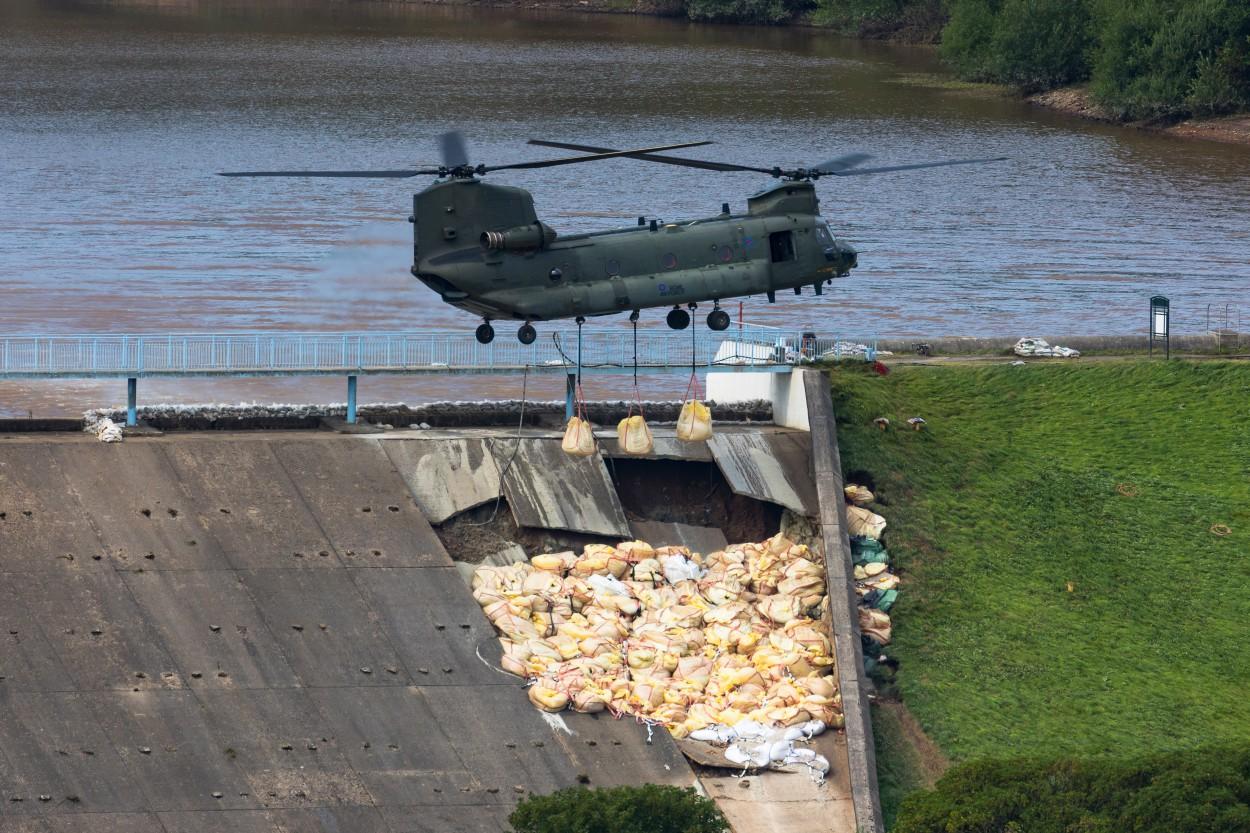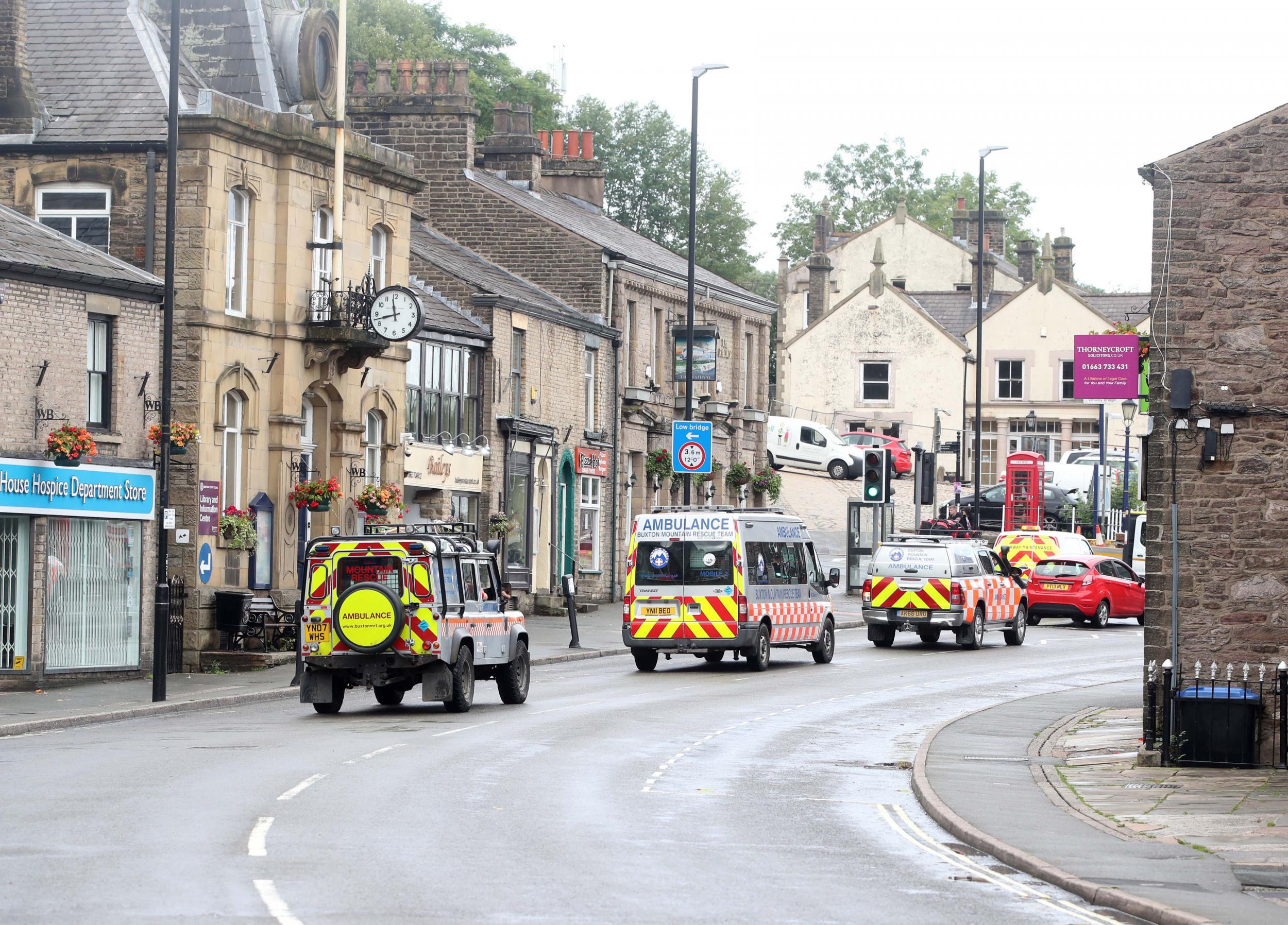The Chernobyl effect? Tourism booming in Whaley Bridge as visitors pile in to see town almost flooded off the map
Pubs, galleries, walks – and now a bona fide brush-with-disaster story have put Peak District community on must-see lists of day-trippers
Your support helps us to tell the story
From reproductive rights to climate change to Big Tech, The Independent is on the ground when the story is developing. Whether it's investigating the financials of Elon Musk's pro-Trump PAC or producing our latest documentary, 'The A Word', which shines a light on the American women fighting for reproductive rights, we know how important it is to parse out the facts from the messaging.
At such a critical moment in US history, we need reporters on the ground. Your donation allows us to keep sending journalists to speak to both sides of the story.
The Independent is trusted by Americans across the entire political spectrum. And unlike many other quality news outlets, we choose not to lock Americans out of our reporting and analysis with paywalls. We believe quality journalism should be available to everyone, paid for by those who can afford it.
Your support makes all the difference.It is the Derbyshire town which, just four weeks ago, was hours from being wiped off the map.
Thousands of Whaley Bridge residents were evacuated as a collapsing dam threatened to send 280 million gallons of water flooding over the Peak District community.
But, it seems, a light brush with a little existential calamity may not be altogether bad for business: tourism here is booming in the aftermath.
Cafes and shops are reporting record numbers of visitors, while holiday lets have seen a surge in last-minute bookings. So often are locals now being asked a single repeated question – “where’s the dam?” – there are proposals to create special signage to point daytrippers in the right direction.
The Chernobyl effect is what some are calling it – although, says Martin Thomas, chair of Whaley Bridge Town Council: “Obviously there’s no danger of radiation here.”
On a sunny day, it is easy to see why there is a flood (no pun intended) of visitors arriving.
The place – population 6,000 – is as picturesque as any of its more famed Peak District neighbours, Buxton, Bakewell and Edale included. There are good pubs, quaint cafes, independent shops and art galleries – as well as all-important chippy – dotting the higgledy-piggledy streets. Both the Peak Forest Canal and River Goyt run through the valley. The walking on the hills offers unrivalled views.
“It’s always been a lovely place,” Cllr Thomas, who has lived here 35 years, tells The Independent. “But perhaps it’s been a bit of a secret. The difference now is that it suddenly has a national profile. People have seen it is on the news, and they’ve come along to have a look for themselves.”
Visitors are intrigued by what happened, too, the 65-year-old reckons. Many ask about those seven August days when emergency workers, engineers and a now famous RAF Chinook helicopter worked around the clock to secure the failing Toddbrook Reservoir. Plenty walk through Memorial Park to see the towering 188-year-old dam itself.
“As a story, it has everything,” Cllr Thomas says. “Near disaster, heroism and a community pulling together. No-one’s saying visitors come just to look at the dam – although it is impressive – but, if they’re looking to spend a day in the Peak District, they are now considering Whaley Bridge in a way they didn’t before.”
Certainly, there is much evidence to support the claim.
The not-for-profit Footsteps community café in Market Street – which Cllr Thomas is a director of – has taken more than £2,000 since it reopened on 8 August, after the evacuation ended. In the same period last year, that figure was just £804. A display in its window showing pictures of the dam and the rescue effort, meanwhile, has proven so popular the photographer has turned the images into a commemorative book. An initial run of 75 sold out within days. More than 400 have since been bought.
“People like the helicopter pictures,” shruggs manager Anne Leyland, 77, when I ask about the book’s popularity. “They want to remember how it looked, up there in the sky.”
A specially-created T-shirt has proven to be a similar hit: “Keep your Chinook up,” it says across the chest.

“The support shown by visitors has been more than we could ever have hoped for,” says Fiona Douglas-Mullett, co-owner of the Little Fika eaterie in Canal Street. “There’s a lot of people coming from over parts of the the north west and Midlands especially. They say they want to help by spending their money here, which is such a moving gesture.”
Ms Douglas-Mullett, a mother-of-two who has lived here for two years, had her parents visit from their native Dorset not long after the near collapse. “One of the first things my dad asked was to see the dam,” she says.
Little Fika, itself, has doubled its takings in August compared to July – although it did lose nearly £500 of fresh food during the evacuation.
Nearby at Jarva Gallery in Market Street, owner Lyndsey Selley doesn’t have sales figures but reckons footfall in her art and jewellery store is massively up over the past three weeks.
It seems, I suggest, like a little disaster might be a good idea every summer?
“I don’t think our nerves could stand it,” she laughs. “But, as a business community, the challenge now is to build on what’s happened and make sure we take advantage of the raised profile.”
A meeting with just this end in mind took place last week between local traders, High Peak Borough Council, Derbyshire County Council and Marketing Peak District and Derbyshire.
The decisions taken have been criticised as a little lightweight – an online video is to be made and, if funding can be found, new signs installed and old ones improved – but Lindsay Rae, deputy director of Marketing Peak District and Derbyshire, reckons the benefits can be long-term.
“We now have to work hard to capitalise by making sure every visitor here leaves with the best possible impression so they go away and tell their friends, who then also visit,” she says. “There’s no reason this can’t be self-perpetuating.”
Certainly, that’s also the hope of John Wakeham, owner of Springbank Guest House in Reservoir Road.

He says he’s had cancellations from holiday-makers now apparently apprehensive about staying in a town which sits under a vast 19th century reservoir – but that such drop-outs have been matched by last-minute bookings from visitors who, it seems, do want to stay in exactly such a place.
“It’s been a six and two-threes for us,“ he says. “No business wants cancellations, but they’ve mainly been evened out by the new guests. We can’t complain. I suppose the whole things has made Whaley unique.”
Not everyone has benefited, it should be said.
The week-long closure forced by the evacuation inevitably meant lost money, while house prices are understood to have fallen in the aftermath. Several sales have collapsed.
There is some anger, too, at the Canal and River Trust, which manages the reservoir. Residents are asking why inspections did not reveal potential issues with the dam – a question currently being addressed, the trust says, in an independent inquiry.
The reservoir itself, meanwhile, will stay shut for an estimated three years while the wall is fixed, the cost of which could run into tens of millions of pounds.
But for now, back at Footsteps cafe, Cllr Thomas remains sure the long-term positives of the collapse will outweigh the negatives.
“I’ve walked through the place the last few week and the shops are bursting at the seams, the sun is shining, the community is out spending money with each other,” he says. “It’s been wonderful to see. Whatever happens now, it’s been a summer no one will forget.”

Join our commenting forum
Join thought-provoking conversations, follow other Independent readers and see their replies
Comments